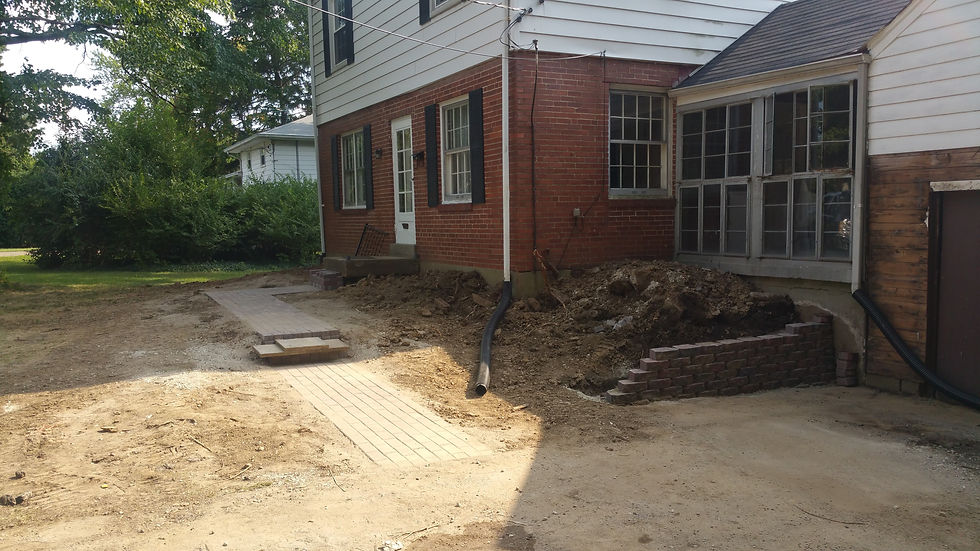Retaining Wall Repair Cincinnati
Retaining walls in Cincinnati (and just about everywhere) can fail for several reasons like poor backfill, base material, drainage issues, or new structures adding more weight to the retained area.
Even trees in the surrounding area can affect your retaining wall with roots that are constantly growing. It is our job to find out why a retaining wall failed and come up with a solution.
In our experience and we believe other contractors would say as well that poor drainage is the biggest reason walls fail.
You are probably wondering what do you mean by poor drainage?
Bulging natural stone retaining wall





Just about every retaining wall should have 18 inches or more of 1" clean angular gravel filled from the back of the wall material(block, concrete, wood, etc) into the retained area and all the way down to the base layer of the block where a drain pipe should be located.
For example, a 3ft high x 30ft long wall, would have a gravel footprint of 3ft H x 30 W x 1.5ft D- this would require approximately 7 tons of gravel backfill.
What this gravel backfill does is let the water that flows toward the wall get down to the drainpipe as easily as possible and thus away from the wall.
Now let's say there is little to no gravel backfill and it's all clay/soil and other debris. When it rains and water collects and saturates the soil around the wall it puts a lot more pressure on the wall than it may have been designed for.
You can notice this when walls are bulging in certain areas or possible cracks.
Block retaining walls typically have the drain pipe daylighted(drainpipe exposed at soil grade) past the end of the wall directed to keep water from affecting the wall. In certain situations, the wall may have face drains (drains exposed in the finish, pictured to the left, orange-colored circles)
Often Natural stone walls like the one pictured to the right have face drains and they are usually made of clay-clay pipe was commonly used for drain pipe 30/40 years ago back to the 1800s and possibly earlier.
Natural stone retaining wall

Segmental Retaining wall, Allan Block

Geo-grid

Unfortunately, it eventually cracks and crumbles, which lets in sediment clogging it. As you now know when that extra pressure from the water is resting behind your wall, bad things slowly start to happen (overturning, poor settling, etc.).
Fixing this early enough can potentially save your wall and you lots of $$$.
If you're worried about your wall, request a quote here and get some solutions right away.
The other biggest problem we see and this is usually with walls around 4ft and higher is no Geo-grid installed. Geo-grid is a synthetic material woven in a grid with incredibly strong tensile strength. It's also used in roads, patios, and other large structures where the soil below needs to be stabilized as much as possible.
Geo-grid is used with man-made block A.K.A. segmental retaining walls. The mesh grid material is laid into each course of block or every other depending on building requirements and extends at least 3ft into the backfill gravel/soil. Segmental walls can be built 100ft tall as long as you have the right proportioning of geogrid.
Natural Stone walls can incorporate geogrid as well, improving the stability and strength of the wall.
Schedule a free estimate and consultation below

